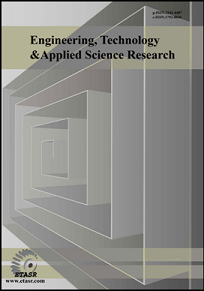An Experimental Study on the Performance of Calcium Carbonate Extracted from Eggshells as Weighting Agent in Drilling Fluid
Abstract
Drilling mud density is an important factor in drilling operations. The cost of the drilling mud used for oil and gas well drilling can be 10%-15% of the total drilling cost, and the deeper the well, the more the needed drilling mud. This research aims to prepare a mud that provides performance similar to the conventional mud and to lower down the dependency of primitive CaCO3 technology by exploring it from trash/polluted and naturally occurring materials. For that purpose, a mud was prepared by replacing primeval CaCO3 with the CaCO3 derived from eggshells, as eggshells contain CaCO3 in high amounts which range from 70% to 95%. The success of this project will provide an affordable solution and an alternative way to explore new methodologies for obtaining CaCO3. According to the 2017 Report of Pakistan Poultry Association (PPA) 18,000 Million table eggs are consumed per year in Pakistan. The obtained results of this research are quite satisfactory. CaCO3 obtained from eggshells is used in high amounts, 275–410g to achieve density ranges from 9.5 to 11.0 pounds per gallon whereas, pure the needed quantity of pure CaCO3 is 150g to obtain the density of 10.5 pounds per gallon. Apart from this, it is also observed that eggshell based CaCO3 samples are more efficient in rheological properties compared to the market samples of CaCO3 t. The pH of pure CaCO3 sample of 10.5 pounds per gallon density is almost the same with the sample of eggshell CaCO3 of 10.5 pounds per gallon density.
Keywords:
drilling fluid, weighting agent, mud balance, calcium carbonate, rheological propertiesDownloads
References
K. A. Fattah, A. Lashin, “Investigation of mud density and weighting materials effect on drilling fluid filter cake properties and formation damage”, Journal of African Earth Sciences, Vol. 117, pp. 345-357, 2016 DOI: https://doi.org/10.1016/j.jafrearsci.2016.02.003
S. Gogoi, P. Talukdar, “Use of Calcium Carbonate as bridging and weighting agent in the non damaging drilling fluid for some oilfields of Upper Assam Basin”, International Journal of Current Research, Vol. 7, No. 8, pp. 18964-18981, 2015
T. Hudson, M. Coffey, “Fluid loss control through the use of a liquid thickened completion and work over brine”, Journal of Petroleum Technology, Vol. 35, No. 10, pp. 1776-1782, 1983 DOI: https://doi.org/10.2118/10652-PA
M. Sajjadian, E. E. Motlagh, A. A. Daya, “Laboratory Investigation to Use Lost Circulation Material in Water Base Drilling Fluid as Lost Circulation Pills”, International Journal of Mining Science, Vol. 2, No. 1, pp. 33-38, 2016 DOI: https://doi.org/10.20431/2454-9460.0201004
N. Gaurina-Medimurec, “Laboratory Evaluation of Calcium Carbonate particle size selection for drill-in fluids”, Rudarsko-Gcolofko-Naftnizbomik, Vol. 14, pp. 47- 53, 2002
A. Odabasi, An Experimental Study of Particle Size and Concentration Effects of Calcium Carbonate on Rheological and Filtration Properties of Drill-in fluids, MSc Thesis, Middle East Technical University, 2015
R. Samavati, N. Abdullah, T. K. Nowtarki, S. A. Hussain, D. R. A. Biak, “Rheological and Fluid Loss Properties of Water Based Drilling Mud Containing HCl-Modified Fufu as a Fluid Loss Control Agent”, International Journal of Chemical Engineering and Applications, Vol. 5, No. 6, pp. 446-450, 2014 DOI: https://doi.org/10.7763/IJCEA.2014.V5.426
M. Amani, J. K. Hassiba, “The Effect of Salinity on the Rheological Properties of Water Based Mud under High Pressures and High Temperatures for Drilling Offshore and Deep Wells”, SPE Kuwait International Petroleum Conference and Exhibition, Kuwait City, Kuwait, 10-12 December, 2012 DOI: https://doi.org/10.2118/163315-MS
P. K. Jha, V. Mahto, V. K. Saxena, “Emulsion Based Drilling Fluids: An Overview”, International Journal of Chem Tech Research, Vol. 6, No. 4, pp. 2306-2315, 2014
P. Talalay, Z. Hu, H. Xu, D. Yu, L. Han, J. Han, L. Wang, “Environmental considerations of low-temperature drilling fluids”, Annals of Glaciology, Vol. 55, No. 65, pp. 31-40, 2014 DOI: https://doi.org/10.3189/2014AoG65A226
P. O. Ogbeide, S. A. Igbinere, “The Effect of Additives on Rheological Properties of Drilling Fluid in Highly Deviated Wells”, Futo Journal Series, Vol. 2, No. 2, pp. 68–82, 2016
N. Al-Malki, P. Pourafshary, H. Al-Hadrami, J. Abdo, “Controlling bentonite-based drilling mud properties using sepiolite nanoparticles”, Petroleum Exploration and Development, Vol. 3, No. 4, pp. 717-723, 2016 DOI: https://doi.org/10.1016/S1876-3804(16)30084-2
C. Kelessidis, “Drilling fluid challenges for oil-well deep drilling”, nternational Multidisciplinary Scientific GeoConference SGEM 2009, Albena, Bulgaria, June 14-19, 2009
Downloads
How to Cite
License
Copyright (c) 2019 Engineering, Technology & Applied Science Research

This work is licensed under a Creative Commons Attribution 4.0 International License.
Authors who publish with this journal agree to the following terms:
- Authors retain the copyright and grant the journal the right of first publication with the work simultaneously licensed under a Creative Commons Attribution License that allows others to share the work with an acknowledgement of the work's authorship and initial publication in this journal.
- Authors are able to enter into separate, additional contractual arrangements for the non-exclusive distribution of the journal's published version of the work (e.g., post it to an institutional repository or publish it in a book), with an acknowledgement of its initial publication in this journal.
- Authors are permitted and encouraged to post their work online (e.g., in institutional repositories or on their website) after its publication in ETASR with an acknowledgement of its initial publication in this journal.

